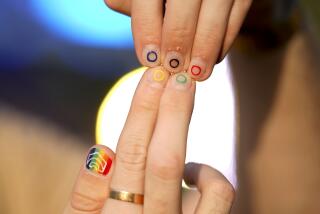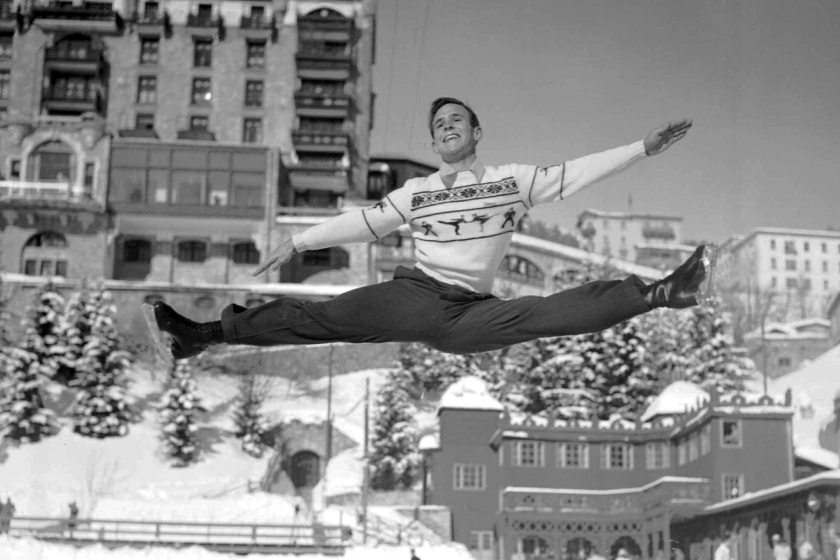Olympic Javelin Thrower Raps U.S. Drug Testing
- Share via
GOLETA — Karin Smith, a four-time U.S. Olympic javelin thrower, said Monday that drug use by U.S. track and field athletes is rampant, and that the country’s testing system is questionable.
“Drug testing in this country is a farce,” said Smith, an Olympian every year since 1976. “There must be a large coverup.”
Barron Pittenger, executive director of the U.S. Olympic Committee, denied the charge.
“There is no coverup,” he said in a telephone interview from the United States Olympic Committee headquarters at Colorado Springs, Colo. “I don’t know what she’s talking about.”
Smith, winner of five national women’s javelin titles, made the accusations in an interview at the U.S. Olympic track and field training camp at UC Santa Barbara.
Smith also said some nations seem to sacrifice certain athletes to save others when a rash of drug tests turn up positive.
Smith said that “in talking to a few people, I have been told that some older athletes (in other countries) who have tested positive have been sacrificed by their federations to save somebody else who is younger, more talented and has better marks in certain events.
“I have heard that if six people test positive, the federation will say, which two should we take?” Smith said. “I hope that’s not the case.
“But drug use has become so far spread that there has to be an explanation why more aren’t caught.
“Is this a game of chess, using the athletes as pawns? Or are the tests not as sophisticated as they are supposed to be?
“You wonder how long they are able to get away with it.”
Smith’s comments came in the wake of a report that all U.S. athletes cleared drug-testing procedures after last month’s U.S. Olympic track and field trials at Indianapolis.
Although 6 to 10 athletes failed the tests, none will be suspended because they tested positive for stimulants contained in over-the-counter medications or herbal teas, USOC officials said. Hearings have determined that the use was either pre-declared or inadvertent, according to Mike Moran, U.S. Olympic Committee spokesman.
Moran said none of the positive tests was related to anabolic steroids.
Smith, who has worn a “Just Say No” to drugs cap during competition, has not yet been notified whether she was among those testing positive at Indianapolis.
But she indicated it is possible, because as late as two days before her competition, she was taking a medication to cure swollen glands.
Smith said the drug is not on the banned list provided by The Athletics Congress, governing body for track and field in the United States, but she found out it is on the USOC’s banned list.
When she discovered it, Smith informed Dr. Harmon Brown, head of TAC’s Sports Medicine Committee.
“One flaw in the system is that TAC has a safe list different from the USOC, and the USOC may have a list different from the IOC (International Olympic Committee),” Smith said. “We have only the TAC list.
“When we have competition that involves the TAC and the IOC, we could be thrown into different lists. For example, Murine in the eyes could come up positive. It could be on one list and not the other.
“Testing should be more specific. People who take Sudafeds or Visine should not be penalized like people who take growth hormones or cocaine or speed or things of that nature.”
Pittenger admitted that the different lists can create confusion. But he said the USOC testing system doesn’t punish athletes who need to take medication containing banned substances.
If athletes declare that they are taking such medication before competing, they won’t be penalized for testing positive, Pittenger said.
Smith said 17 track and field athletes “tested positive at the 1984 U.S. Olympic Trials” and none was punished.
“That’s a number I’ve heard and a lot of other people have heard,” she said. She said she didn’t know what they tested positive for, “but nobody got expelled or banned.”
Pittenger said Smith was misinformed.
“No one tested positive at the 1984 Olympic Trials,” he said.
She said that in 1976, she was diagnosed as having “walking pneumonia” before the trials, “but I didn’t want to go to a doctor until six days after the competition because I was so paranoid I would get called” in for a hearing.
Smith also noted that some athletes can come off their use of illegal drugs in sufficient time before championship meets, at which there is drug testing, and some athletes resort to blood doping, which is as yet undetectable.
She also said that athletes such as shotputters, discus throwers and javelin throwers should not carry the stigma of being the sole users of illegal drugs.
More to Read
Go beyond the scoreboard
Get the latest on L.A.'s teams in the daily Sports Report newsletter.
You may occasionally receive promotional content from the Los Angeles Times.






